Quan Su Pagoda, nestled in the heart of Hanoi’s Hoan Kiem District, stands as a symbol of spiritual tranquility in the bustling cityscape. Known as the headquarters of the Buddhist Sangha in Vietnam, this sacred site attracts both devotees and curious travelers alike. The pagoda’s history, dating back to the 15th century, presents a tapestry of cultural and religious narratives. Whether you’re a history enthusiast or a seeker of peace, Quan Su Pagoda promises a deeply enriching experience.
Watch the video summarizing the article “Quan Su Pagoda: A Key Religious Site in Hanoi”
Location and Accessibility
Located conveniently at 73 Quan Su Street, exploring the pagoda is a breeze for locals and tourists. The proximity to Hanoi’s popular sites, including Hoan Kiem Lake, makes it an ideal waypoint for cultural exploration. Its accessibility via various transport options further amplifies its appeal, effortlessly integrating into the city’s dynamic travel network.
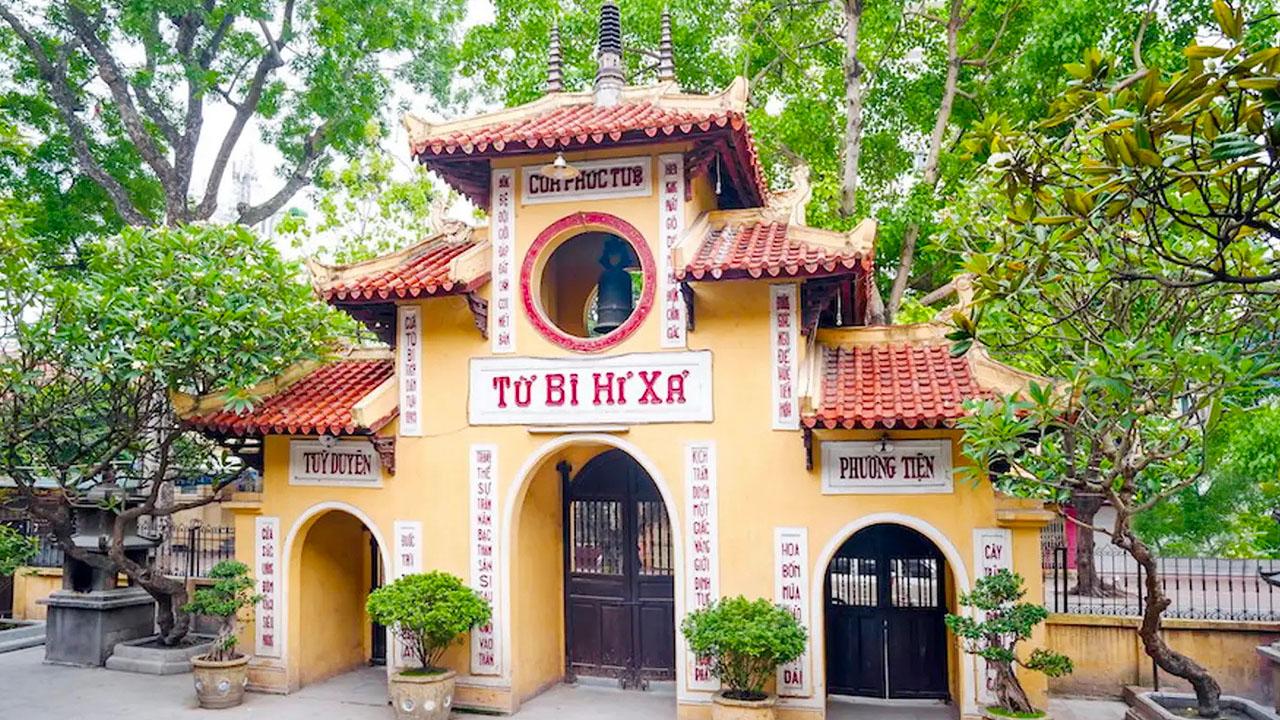
Address and Directions to Quan Su Pagoda
Situated at 73 Quan Su Street in Hoan Kiem District, Hanoi, Quan Su Pagoda is easily accessible by multiple modes of transportation. This central location ensures that it’s a convenient stop for travelers seeking to immerse themselves in Vietnamese culture and spirituality. Getting to the pagoda from various parts of Hanoi is straightforward:
- By Foot: Those staying close to the Old Quarter can enjoy a leisurely stroll to the pagoda, taking in vibrant street scenes along the way.
- By Bicycle: Cycling offers an eco-friendly way to navigate the city’s bustling streets, with designated lanes available for safety.
- Public Transport: Several bus routes, such as lines 01, 32, and 40, have stops near the pagoda. Utilizing buses is both affordable and provides a chance to mingle with locals during your journey.
- Taxi or Ride-Sharing Apps: Taxis are readily available throughout Hanoi, with ride-sharing applications like Grab offering an easy-to-use alternative for those preferring a direct route.
Each option presents an opportunity to experience Hanoi’s unique urban tapestry, allowing visitors to engage with the city on their own terms while heading to this historical site.
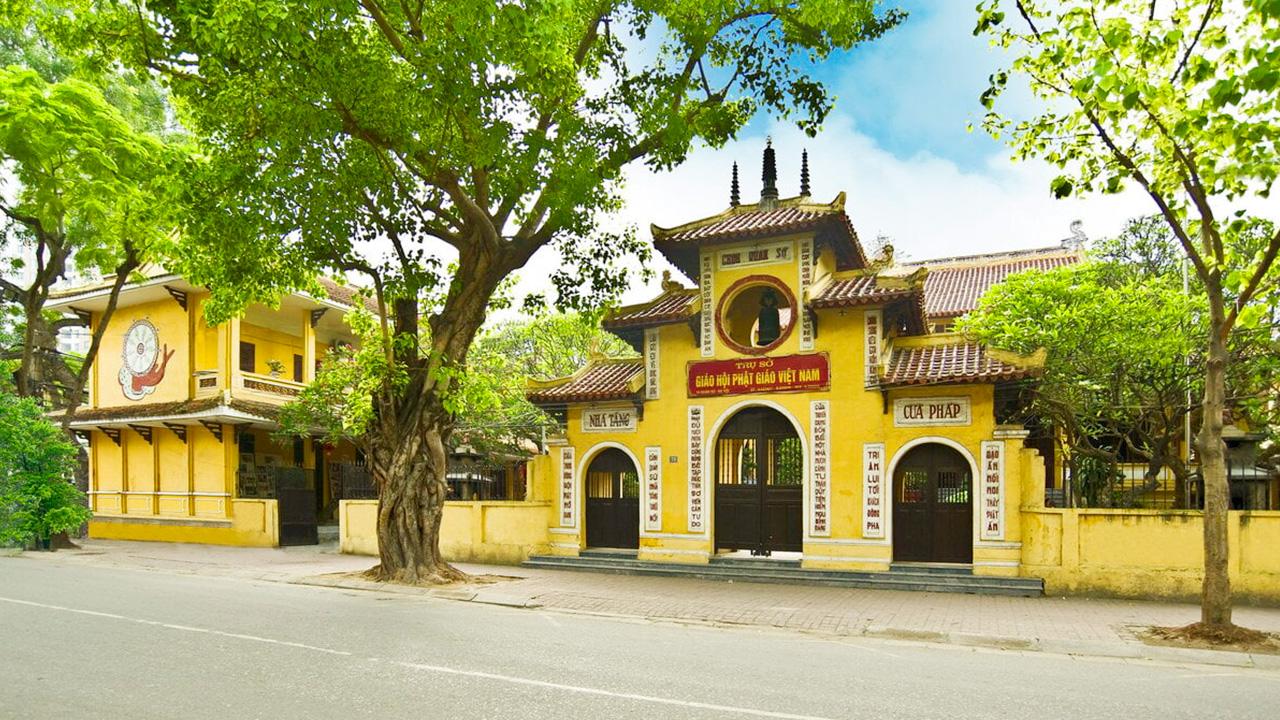
Available Transportation Options
Travelers in Hanoi can choose from a multitude of transportation options, each with its pros and cons, to reach Quan Su Pagoda. These means include:
- Walking: Ideal for those residing nearby, enabling exploration of Hanoi’s charming alleyways.
- Cyclo or Rickshaw: An iconic experience, offering a slower pace that’s perfect for absorbing the vibrant surroundings.
- Public Transport: Hanoi’s bus system is extensive, with lines that make stops conveniently close to the pagoda.
| Transport Mode | Benefits | Drawbacks |
|---|---|---|
| Walking | Free, immersive | Limited to nearby areas |
| Cyclo/Rickshaw | Traditional experience, scenic | More expensive than buses |
| Bus | Economical, broad coverage | Can be crowded during peak |
- Motorbike Rental: For thrill-seekers wanting to traverse the city with agility, albeit requiring confidence and awareness of local traffic dynamics.
- Car Rentals: Ideal for larger groups or those seeking comfort, although navigating Hanoi’s traffic might pose challenges without prior experience.
Each option caters to different preferences, ensuring a tailored travel experience for every visitor venturing to Quan Su Pagoda.
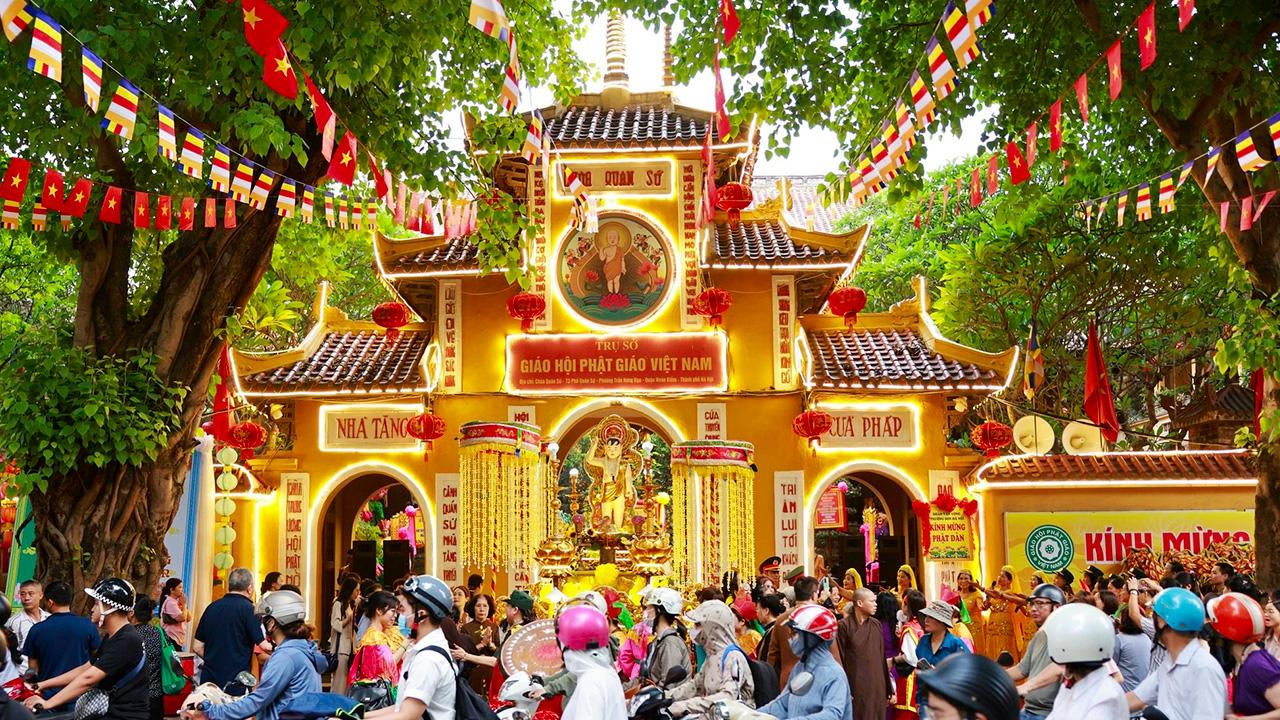
Historical Significance
Quan Su Pagoda’s rich history intertwines with the cultural and spiritual development of Hanoi, symbolizing the deep-rooted Buddhist traditions in the region. This revered site not only stands as a testament to the city’s religious heritage but also as a beacon of historical narratives spanning centuries.
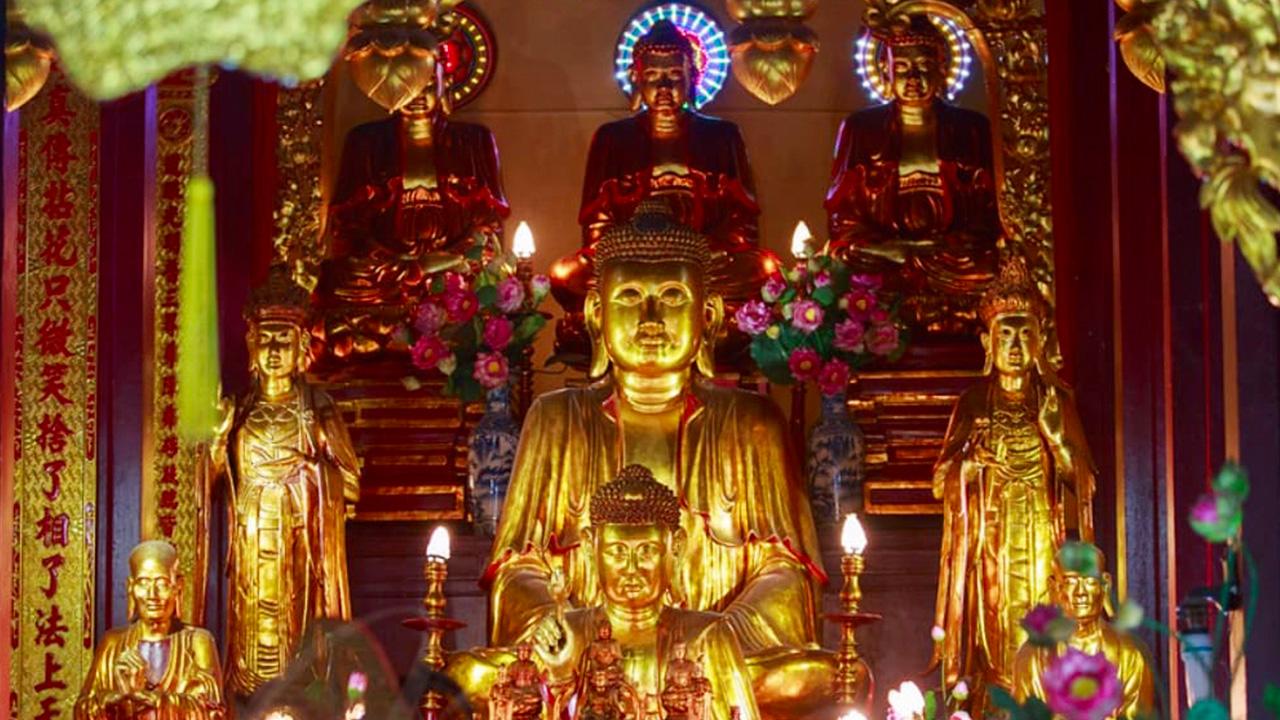
Origin and Establishment of Quan Su Pagoda
The origins of Quan Su Pagoda trace back to its establishment during the rule of the Lê dynasty in the 15th century. Originally built to serve Buddhist ambassadors from Champa and Laos, its historical narrative highlights its diplomatic and religious significance. The pagoda’s name, “Quan Su,” translates to “Ambassador’s House,” reflecting its initial function as a center for diplomatic exchanges where Buddhist envoys could perform their religious duties.
Over the centuries, Quan Su Pagoda has seen various transformations, expanding to accommodate the growing needs of its followers. Today, it stands as an exemplary model of traditional Vietnamese architecture, combined with Chinese influences, offering a rich tapestry of stories embedded within its ancient walls. Not just a holy site, Quan Su Pagoda has been a pivotal venue for cultural exchange, signifying the confluence of diplomatic and spiritual harmony in its early years.
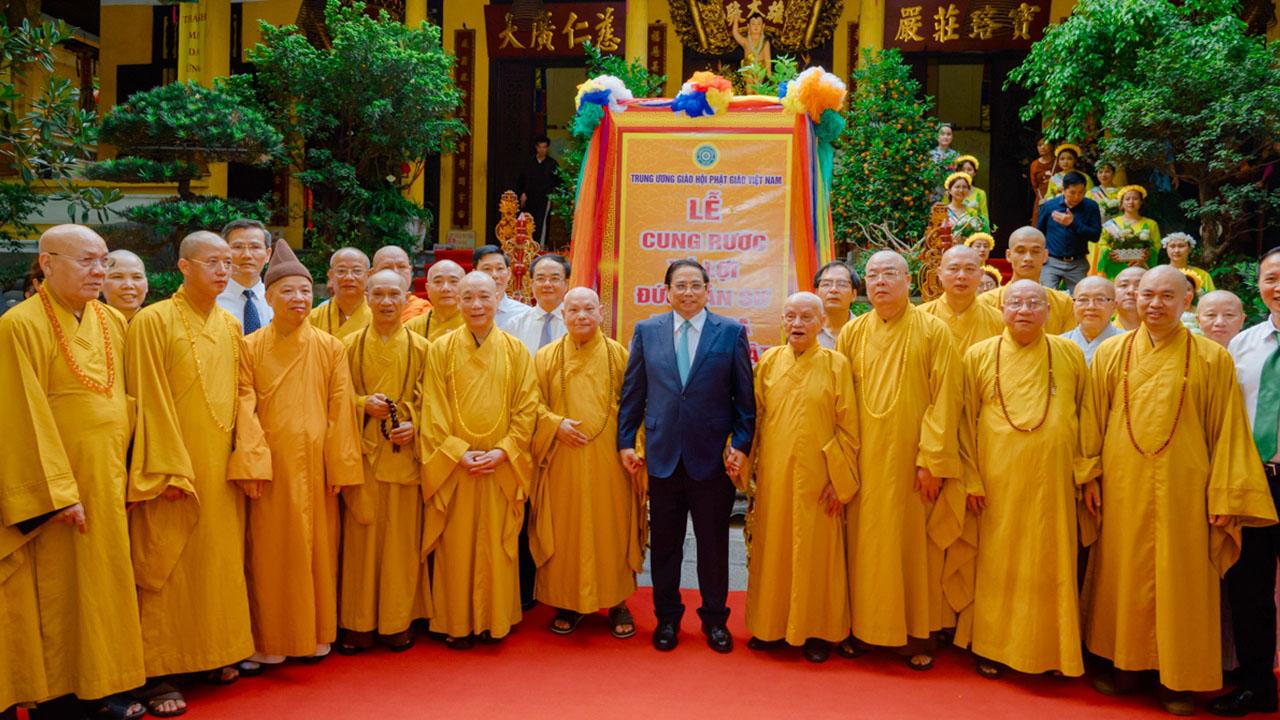
Major Renovations Throughout History
Throughout its storied existence, Quan Su Pagoda has undergone several renovations, each aiming to preserve its intricate architecture and spiritual essence while adapting to the times. Notably, significant restoration efforts were made in 1815 to maintain its structural integrity and aesthetic appeal.
- 1815 Renovation: A major restoration took place under the guidance of the Vietnamese authorities, focusing on preserving the wooden carvings and red-tiled roofs that have become synonymous with the pagoda’s distinct aesthetic.
- 1942 Redesign: This refurbishment, led by architects Nguyen Xuan Tung and Nguyen Ngoc Ngoan, was instrumental in fortifying the pagoda’s complex, ensuring its longevity amid Hanoi’s urban development.
By continually adapting, Quan Su Pagoda remains both a bastion of historical architecture and a living testament to the enduring legacy of Vietnamese Buddhism. These renovations underscore the community’s commitment to preserving a prominent cultural and religious landmark.

Role in Vietnamese Buddhism Development
Quan Su Pagoda has played an indispensable role in the evolution and sustenance of Buddhism in Vietnam. The pagoda’s establishment during the Tran Dynasty in the 14th century marked the beginning of its influence over Vietnamese Buddhist practices. It continues to serve as the headquarters of the Vietnam Buddhist Sangha, positioning it at the forefront of religious activities and teachings within the country.
The pagoda’s influence extends beyond its historical origins, where it serves as a hub for Buddhist education and cultural preservation. Here, monks and practitioners engage in regular discourse, meditation, and ceremonies, fostering a community deeply rooted in spiritual teachings. Its commitment to promoting Buddhist values ensures that Quan Su Pagoda remains a vital component of Vietnam’s religious landscape, promoting unity and cultural continuity in an ever-evolving cityscape.
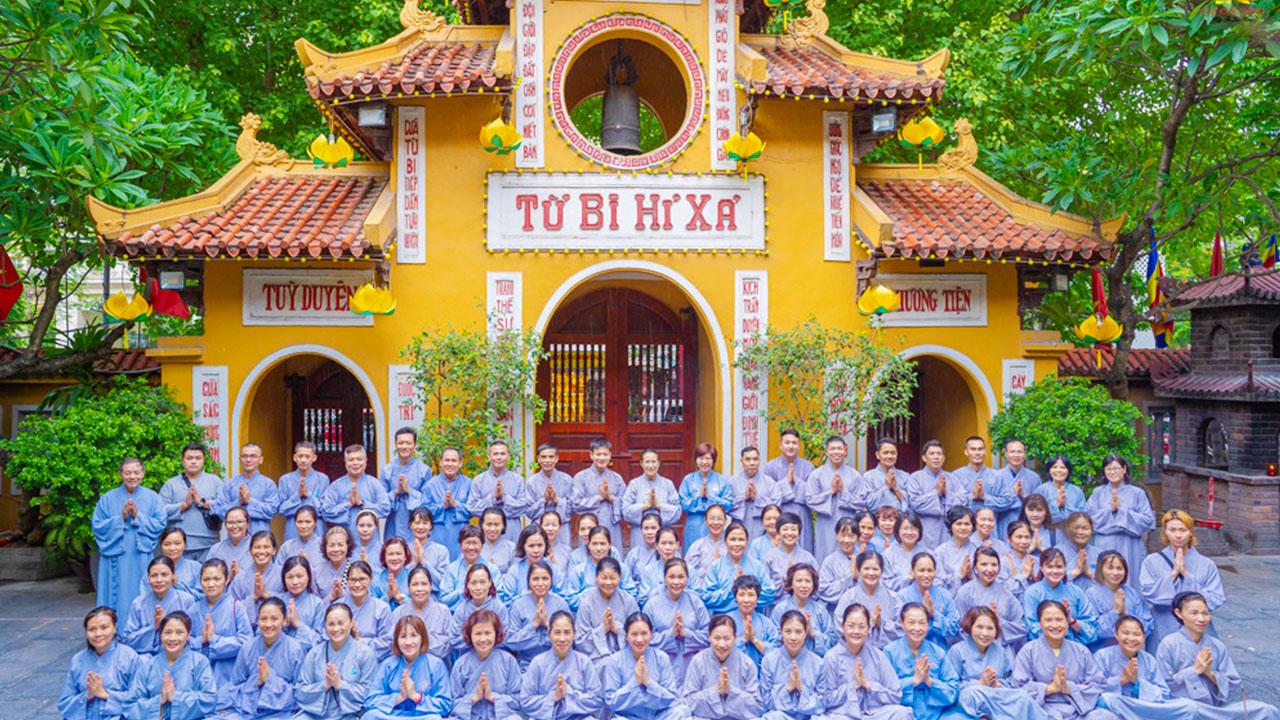
Architectural Features
The architectural marvel of Quan Su Pagoda is not only a feast for the eyes but also a symbol of the depth of Vietnamese cultural and spiritual identity. This aspect of the pagoda connects with its historical narrative, presenting visitors with a harmonious blend of artistry and tradition.
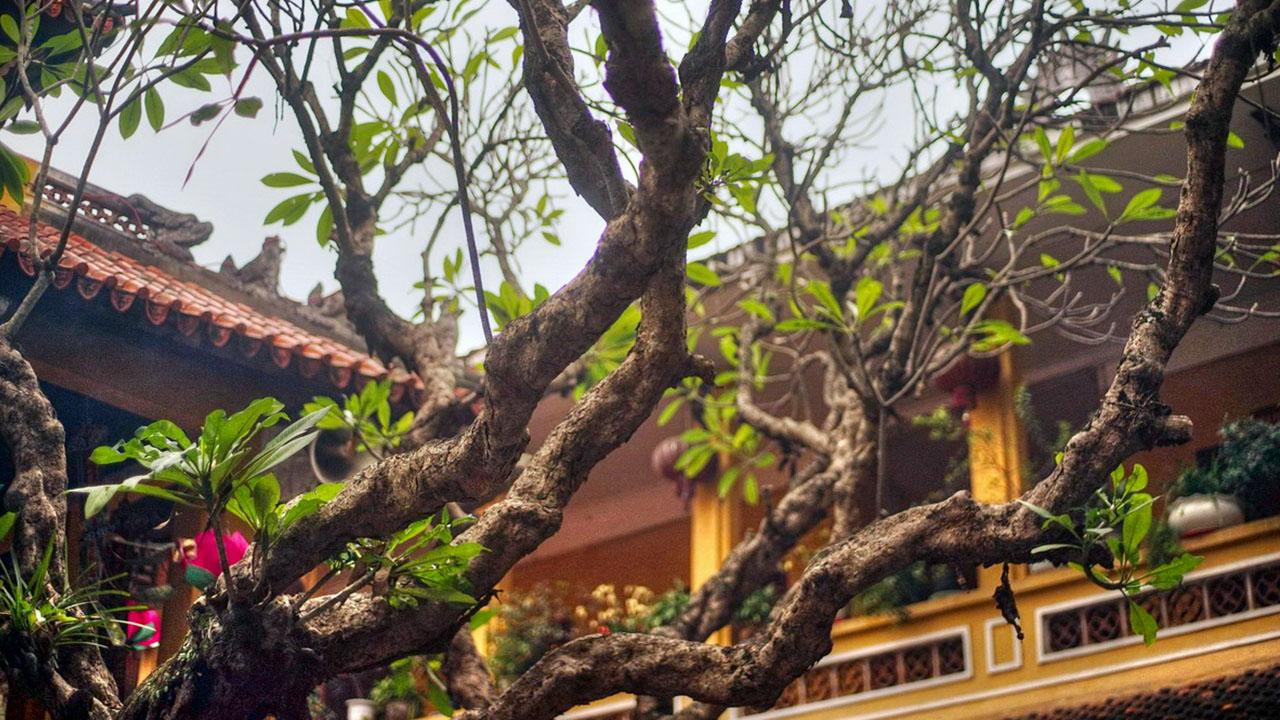
Design Elements of Quan Su Pagoda
Quan Su Pagoda stands as an architectural gem reflective of traditional Vietnamese and Chinese design aesthetics, showcasing a harmonious blend of intricate woodwork, red-tiled roofs, and ornate carvings. Its multi-tiered structure is a testament to the pagoda’s historical richness and its enduring cultural significance.
Key Architectural Features:
- Red-Tiled Roofs: Symbolizing protection and prosperity in Buddhist culture, the roofs are both functional and symbolic, designed to withstand the city’s varying climate.
- Elaborate Carvings: Each carving tells a story, depicting scenes from Buddhist scripture, offering visitors a glimpse into the artistic expressions of faith and spirituality that have transcended generations.
- Courtyard Design: The pagoda’s layout mirrors the Chinese character for “work” or “Công,” emphasizing cooperation and unity principles integral to Vietnamese society and Buddhist doctrine.
These elements are not merely decorative but serve to enhance the pagoda’s spiritual atmosphere, providing an environment conducive to meditation and reflection.

Unique Characteristics of the Pagoda’s Structures
Quan Su Pagoda’s structures are a magnificent showcase of traditional design, blended seamlessly with symbolic elements that reflect its spiritual and cultural importance. Unique in its architectural form, the pagoda includes features that set it apart from other religious buildings.
Distinctive Traits:
- Main Hall: The centerpiece of religious activity, housing impressive statues of revered Buddhist deities like Shakyamuni, Amitabha, and Zen Master Nguyen Minh Khong.
- Bell Tower and Drum House: These structures serve both functional and symbolic purposes, calling followers to prayer and marking time for community rituals, enhancing the spiritual rhythm of the site.
- Guesthouse and Monastic Living Quarters: Reinforce the pagoda’s role as a community center encouraging scholarly pursuits and spiritual growth.
This architectural prowess not only enhances the site’s aesthetic appeal but also encapsulates the essence of Vietnamese Buddhism within its hallowed walls.

Symbolic Significance of the Architecture
The architecture of Quan Su Pagoda is laden with symbolic meaning, each aspect meticulously crafted to align with Buddhist ideologies. The layout and design invite reflection on both personal and communal levels, fostering a deeper connection with Buddhist philosophies.
Symbolic Aspects:
- Multi-Tiered Roofs: Represent layers of heaven, guiding visitors towards enlightenment and spiritual ascension.
- Statue Placement: Arranged meditatively to facilitate offerings and prayer, each statue embodies specific virtues, serving as an inspiration for moral and spiritual development.
- Spatial Arrangement: Encourages balance and harmony, principles that resonate with visitors seeking peace and reflection within the bustling city.
Quan Su Pagoda, through its architecture, not only provides a sanctuary for worshippers but also serves as a beacon of cultural identity and spiritual guidance in Hanoi.
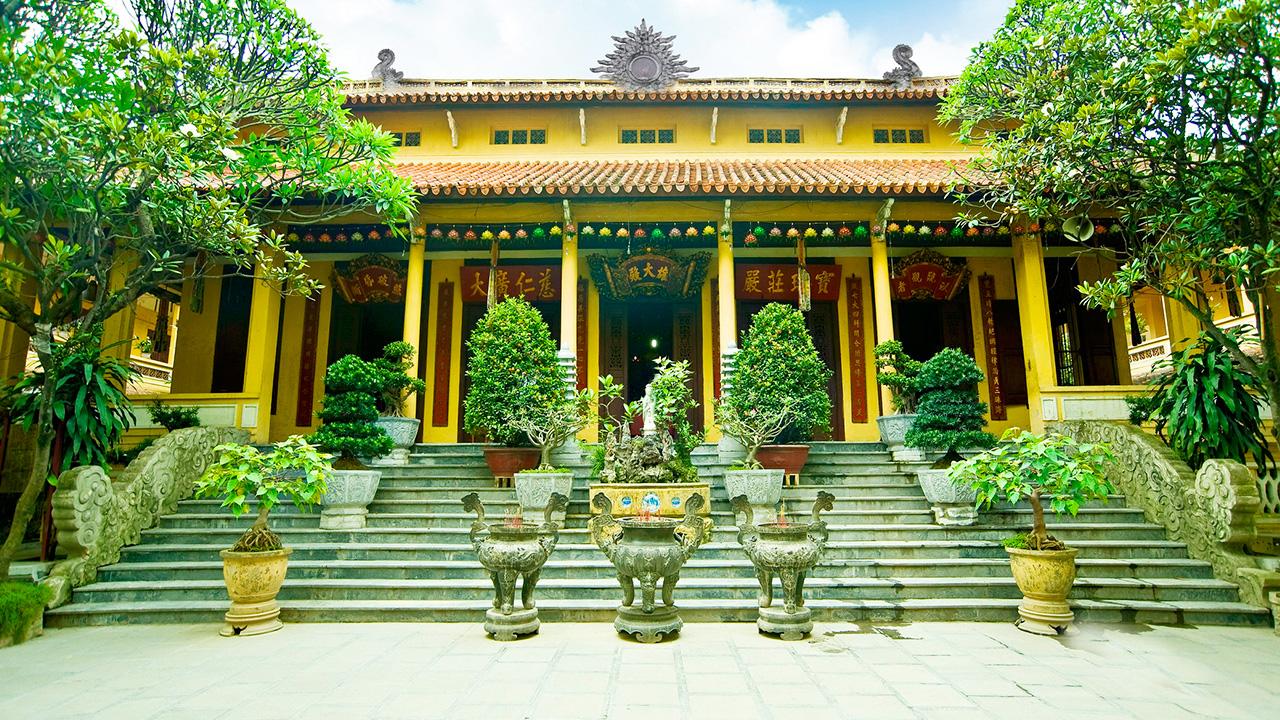
Religious Practices
The sacred ambiance of Quan Su Pagoda is further enriched by its architectural marvels, providing a backdrop for a plethora of religious practices. These practices offer insight into the enduring spiritual traditions that have been preserved and celebrated within its confines.

Primary Worship Deities at Quan Su Pagoda
Central to the spiritual life of Quan Su Pagoda is the worship of key Buddhist figures, whose depictions grace the interior, offering a focal point for prayer and meditation.
Principal Deities Worshiped:
- Gautama Buddha: As the primary figure in Buddhism, his image serves as a universal symbol of enlightenment and inner peace.
- Amitabha Buddha: Venerated for his boundless compassion and the promise of rebirth in the Western Pure Land, he plays a crucial role in the spiritual lives of practitioners.
- Avalokiteshvara (Quan Yin): As the bodhisattva of compassion, Quan Yin is highly revered, her presence a reminder of mercy and loving-kindness.
These deities embody the spiritual aspirations and moral virtues that visitors and worshippers seek to emulate and internalize, positioning the pagoda as a spiritual haven amidst the modern world.
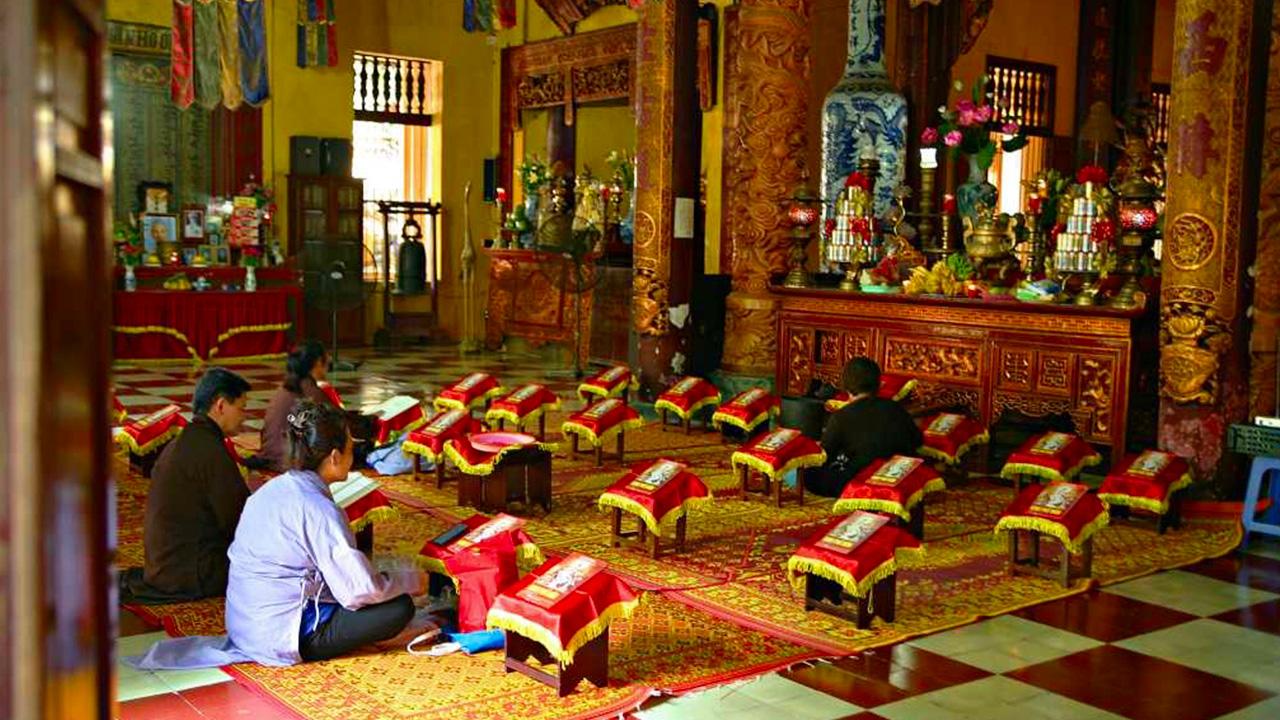
Ceremonial Events and Festivals
An integral aspect of Quan Su Pagoda’s vibrant spiritual community is its calendar of ceremonies and festivals, which sustain traditional practices and invite wider participation from the local and global community.
Noteworthy Events:
- Vesak Festival: Commemorates the life of Buddha, celebrated with elaborate processions, chants, and offerings, marking one of the most significant days in the Buddhist year.
- Lantern Festival: Held on the 15th day of the Lunar New Year, this event sees the pagoda illuminated in vibrant lanterns, symbolizing enlightenment and hope.
- Monthly Rituals: Frequent observance of rituals and prayers aimed at fostering spiritual growth and communal solidarity.
These events not only provide opportunities for worship but also reinforce the pagoda’s role as a cultural epicenter, where spiritual identity is celebrated and perpetuated.
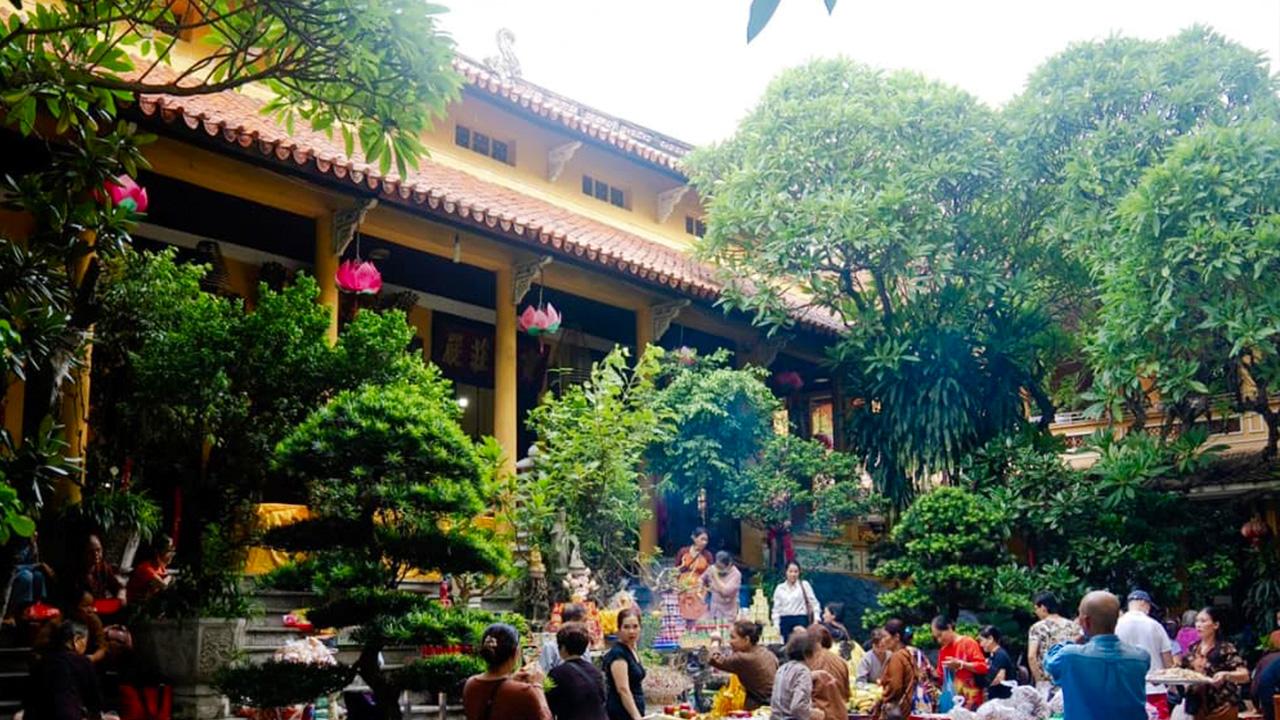
Community Engagement and Social Services
Beyond its religious duties, Quan Su Pagoda plays a dynamic role in community life, offering a range of social services that underscore its commitment to public welfare.
Community Initiatives:
- Charitable Activities: Includes food distribution, educational programs, and support for marginalized communities, fostering a sense of solidarity and compassion.
- Educational Programs: Provide opportunities for learning about Buddhism, meditation, and mindfulness, serving both the local community and visitors keen on deeper understanding.
- Cultural Exchange Events: Facilitate dialogue and interaction between diverse cultural groups, promoting mutual respect and understanding among Hanoi’s urban landscape.
Through these services, Quan Su Pagoda transcends its role as a religious site, becoming a pillar of community support and engagement in Hanoi.
Visitor Information
Engaging with the rich tapestry of religious practices at Quan Su Pagoda provides visitors with a deeply immersive experience. To maximize this encounter, understanding visitor guidelines and local customs ensures a respectful and insightful visit to this spiritual haven.
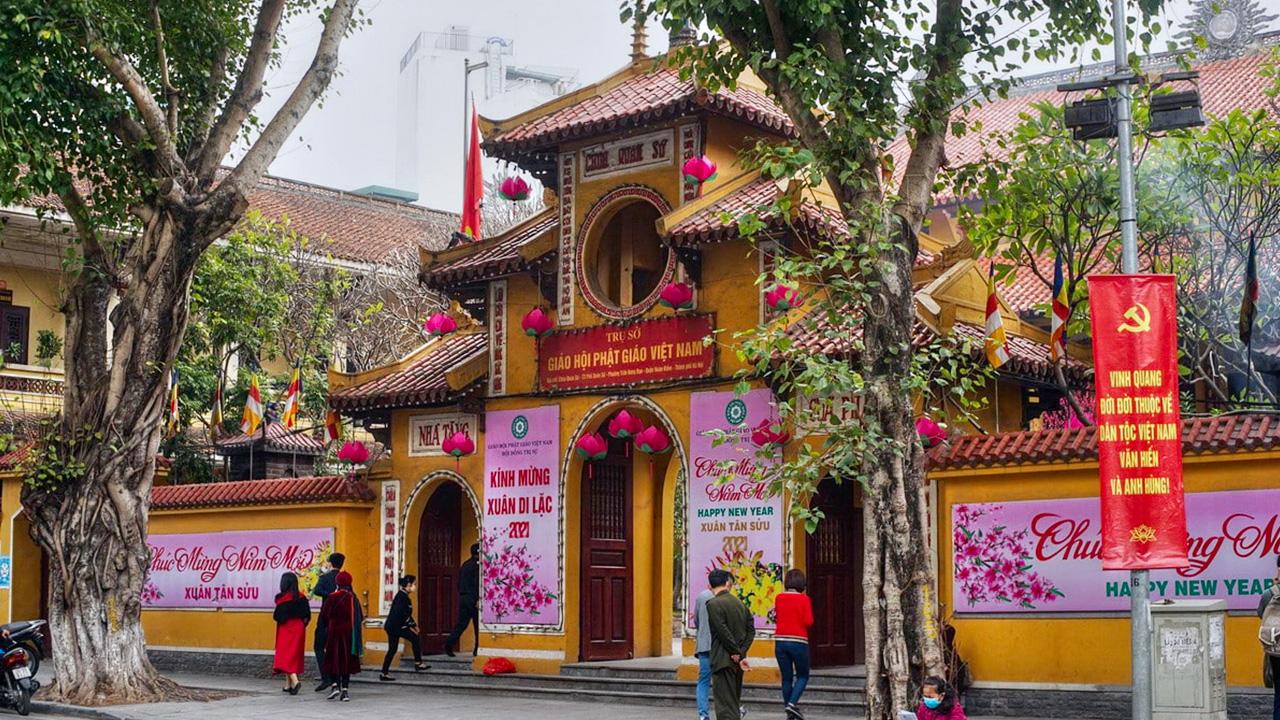
Opening Hours and Admission Fees
Quan Su Pagoda welcomes visitors daily from 6:00 AM to 7:00 PM, offering a perfect window to explore at leisure. Even better, there is no admission fee, which encourages both locals and tourists to engage openly with the site.
The absence of entry fees makes the pagoda accessible to everyone, promoting an inclusivity that reflects Buddhist principles of openness and community. Visitors are encouraged to spend time exploring the various nooks of the pagoda, discovering smaller altars, and enjoying quiet moments of reflection amidst the historical architecture.
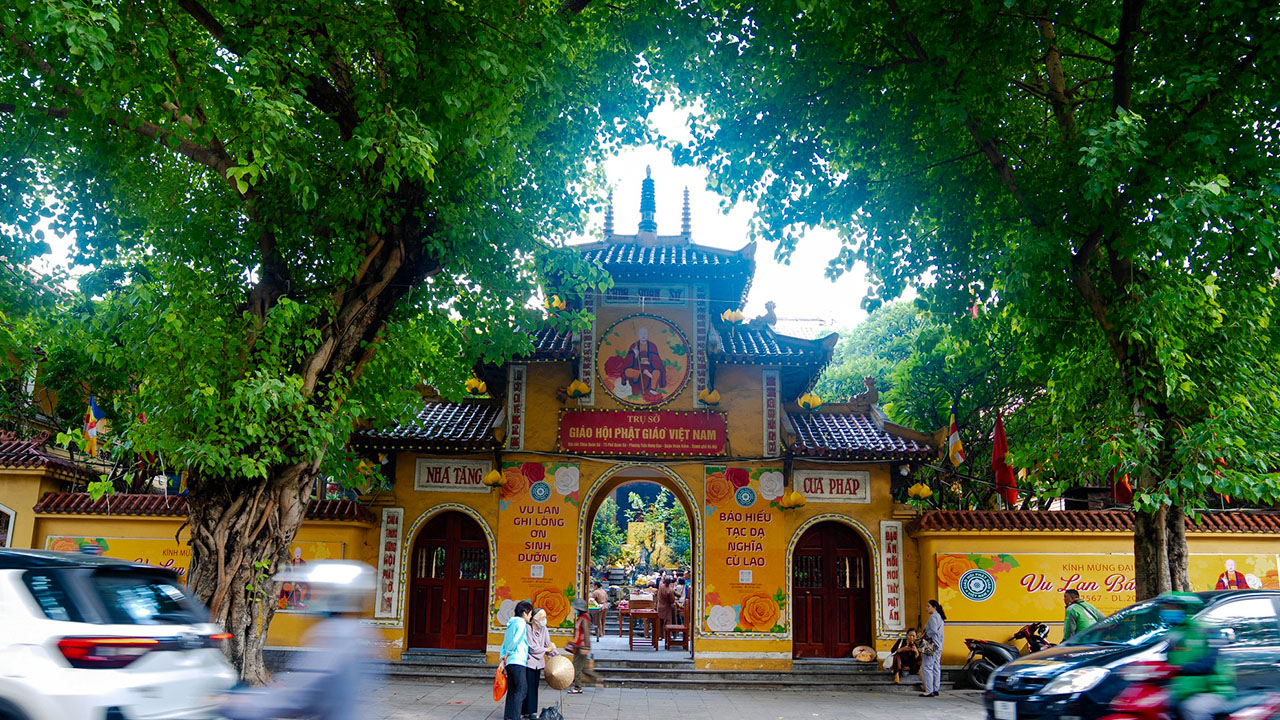
Recommended Etiquette for Visitors
When visiting a revered location like Quan Su Pagoda, adhering to specific etiquette ensures respect for the sanctity of the site and enhances the experience for everyone.
Etiquette Tips:
- Dress Code: Modesty is key. Visitors should avoid wearing revealing clothing, opting instead for longer, loose-fitting garments suitable for a place of worship.
- Behavior: Maintain a quiet and respectful demeanor. Silence electronic devices and refrain from loud conversations to preserve the tranquil atmosphere.
- Photography: While photography is generally allowed, it’s important to follow posted signs and avoid capturing images in areas designated as private or sacred during active ceremonies.
- Offerings: Simple, respectful gestures, like offering flowers or incense, are appreciated. Ensure offerings align with the temple’s requests, often emphasizing vegetarian choices.
Observing these guidelines fosters an environment of mutual respect, allowing for a meaningful connection to the spiritual essence of the site.
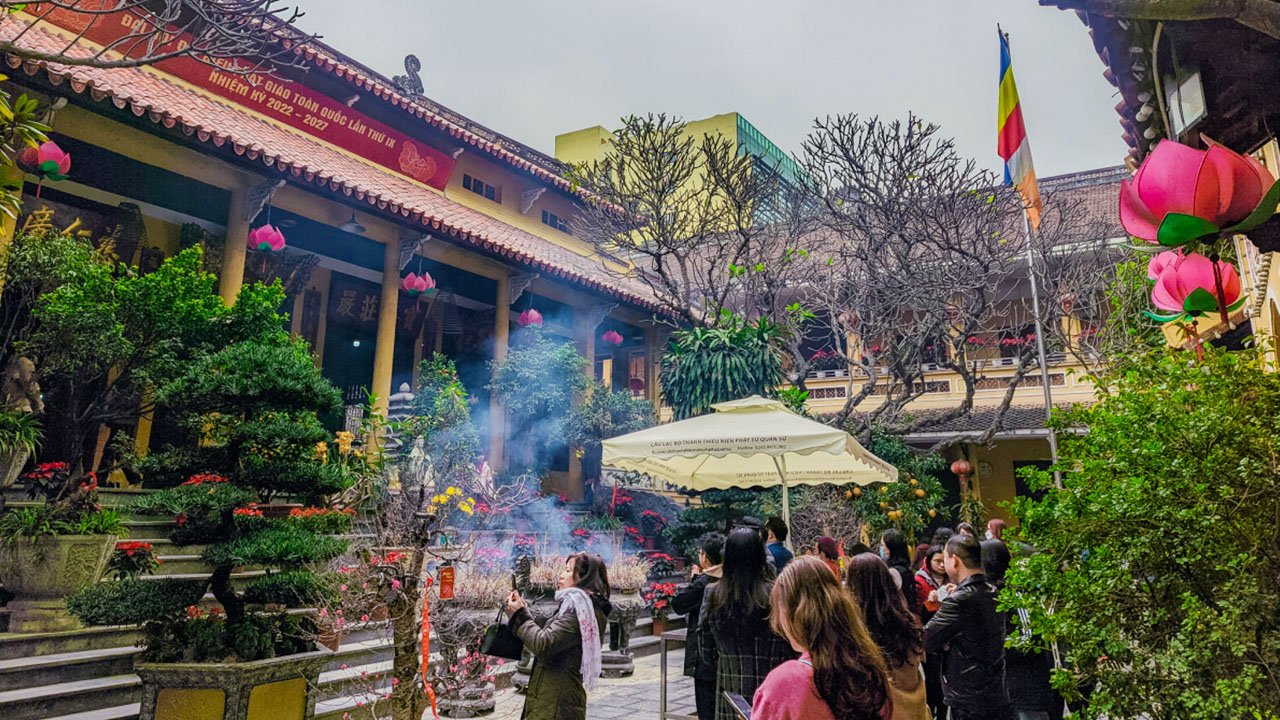
Nearby Attractions and Landmarks
Quan Su Pagoda’s prime location in Hanoi places it in close proximity to various noteworthy attractions and landmarks, perfect for those desiring to explore the rich cultural and historical landscape of the city further.
Nearby Sites:
- Hoan Kiem Lake: A mere kilometer away, this scenic location serves as a hub for relaxation and local festivities, providing an ideal complement to a pagoda visit.
- Old Quarter: Full of vibrant life, offering a maze of streets filled with shops, eateries, and traditional Vietnamese architecture, perfect for those looking to dive deeper into local culture.
- Vietnam National Museum of Fine Arts: Exhibiting art that encapsulates the rich tapestry of Vietnamese cultural history, an engaging site for art enthusiasts.
Engaging with these attractions enriches a cultural tour of Hanoi, blending spiritual exploration at the pagoda with a broader appreciation of the city’s historical and social dynamics.

Cultural Impact
As a significant focal point of the city’s cultural and spiritual identity, Quan Su Pagoda offers visitors a chance to delve into the rich tapestry of Hanoi’s religious life. Its central role in hosting cultural and social events fosters a sense of unity and continuity within the community.
Role as the Headquarters of the Vietnam Buddhist Sangha
Quan Su Pagoda holds the esteemed position of serving as the headquarters of the Vietnam Buddhist Sangha, positioning it as a central figure in religious governance and activities. This role underscores its importance in maintaining the spiritual discourse and practice across Vietnam.
By hosting pivotal meetings and educational programs, the pagoda plays a significant role in shaping Buddhist teachings and governance within the country. Its status enhances its influence, reaching believers nationwide and reaffirming its impact on the cultural and spiritual landscape of Vietnam.
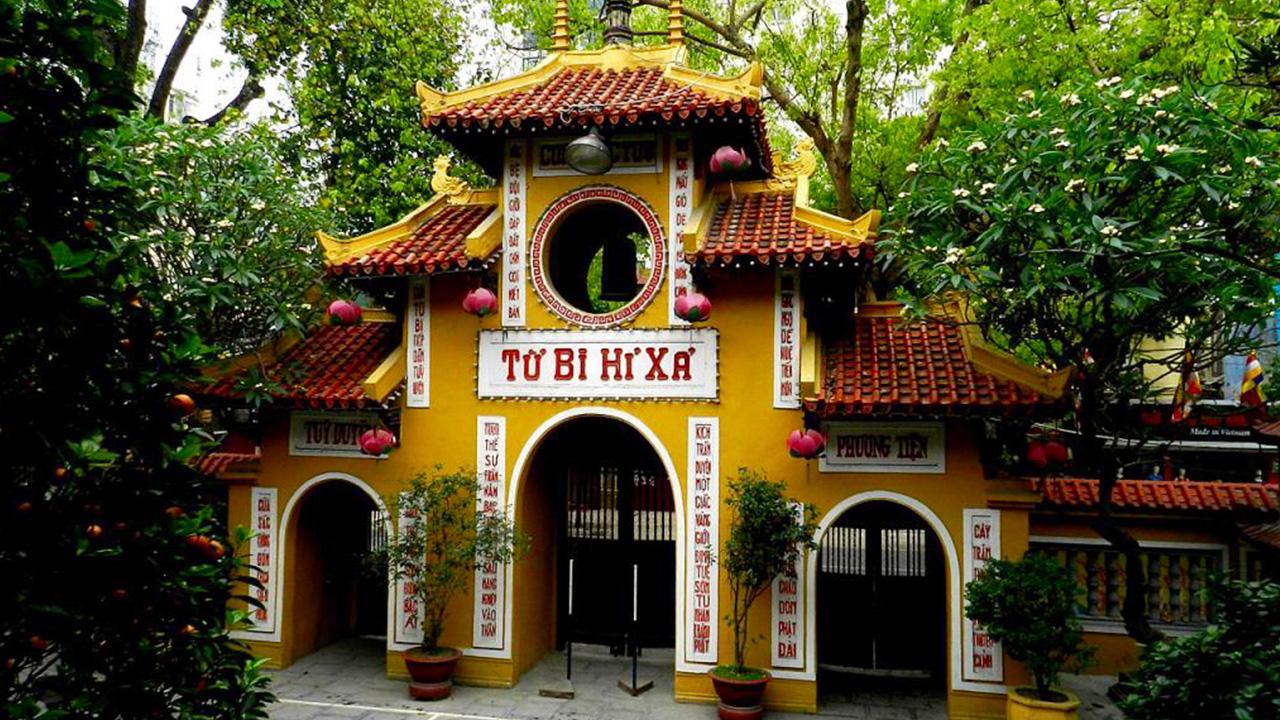
Influence on Local Community and Culture
The influence of Quan Su Pagoda extends beyond its spiritual boundaries, touching the everyday lives of Hanoi’s residents and strengthening communal bonds. It plays an integral part in linking the spiritual with the cultural, facilitating various community initiatives and events.
By offering educational programs and social services, the pagoda not only supports local residents but also encourages cultural preservation and appreciation. These endeavors ensure that tradition and modernity coexist harmoniously in Hanoi, paving the way for cultural continuity amidst a rapidly evolving urban setting.

Preservation of Traditional Buddhist Practices
At the heart of Quan Su Pagoda’s influence is its tireless effort to preserve traditional Buddhist practices against the backdrop of modern urban life. This commitment ensures that the sacred rites and rituals integral to Vietnamese Buddhism continue to thrive.
Through regular ceremonies and festivals, the pagoda sustains a living tradition, allowing old customs to be practiced and appreciated by new generations. By anchoring younger practitioners in historical and spiritual practices, Quan Su Pagoda ensures that the essence of Vietnamese Buddhism remains vibrant and relevant today.
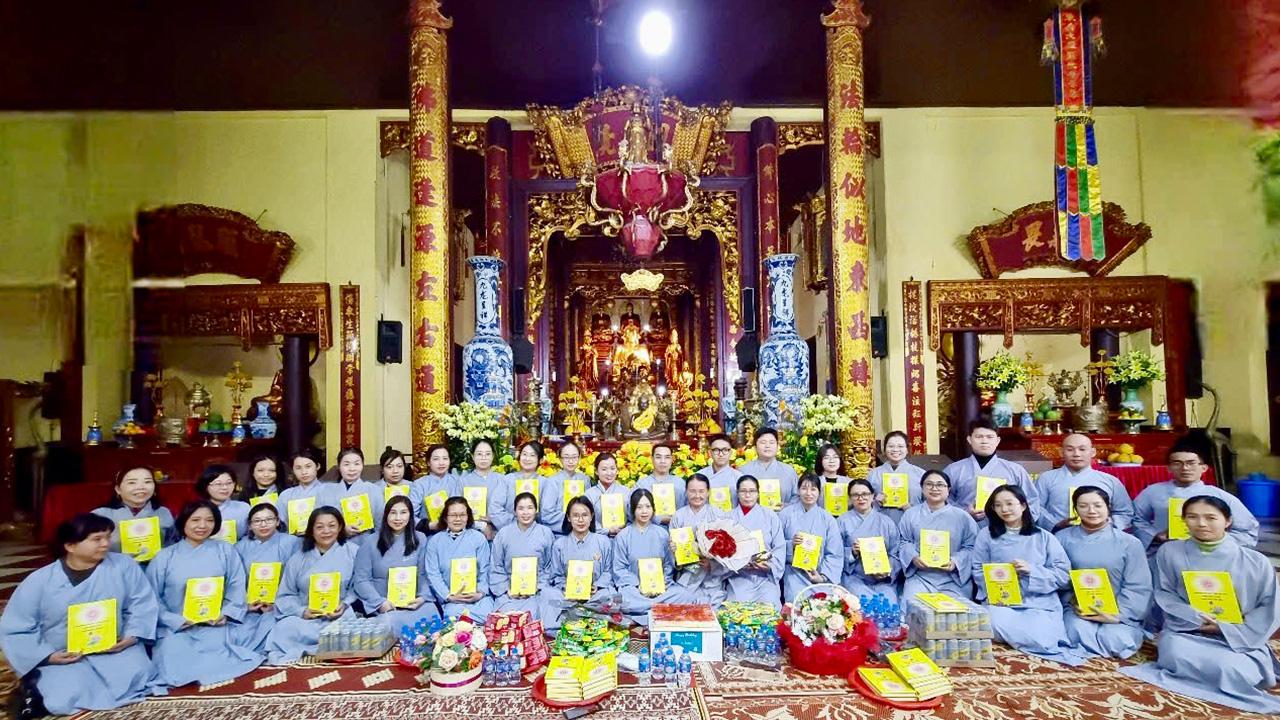
Visitor Experience
Experiencing the cultural and spiritual richness of Quan Su Pagoda provides profound insights into the local community’s way of life, deeply rooted in Buddhist traditions. Understanding these cultural impacts can greatly enhance the visitor’s appreciation of this sacred site.
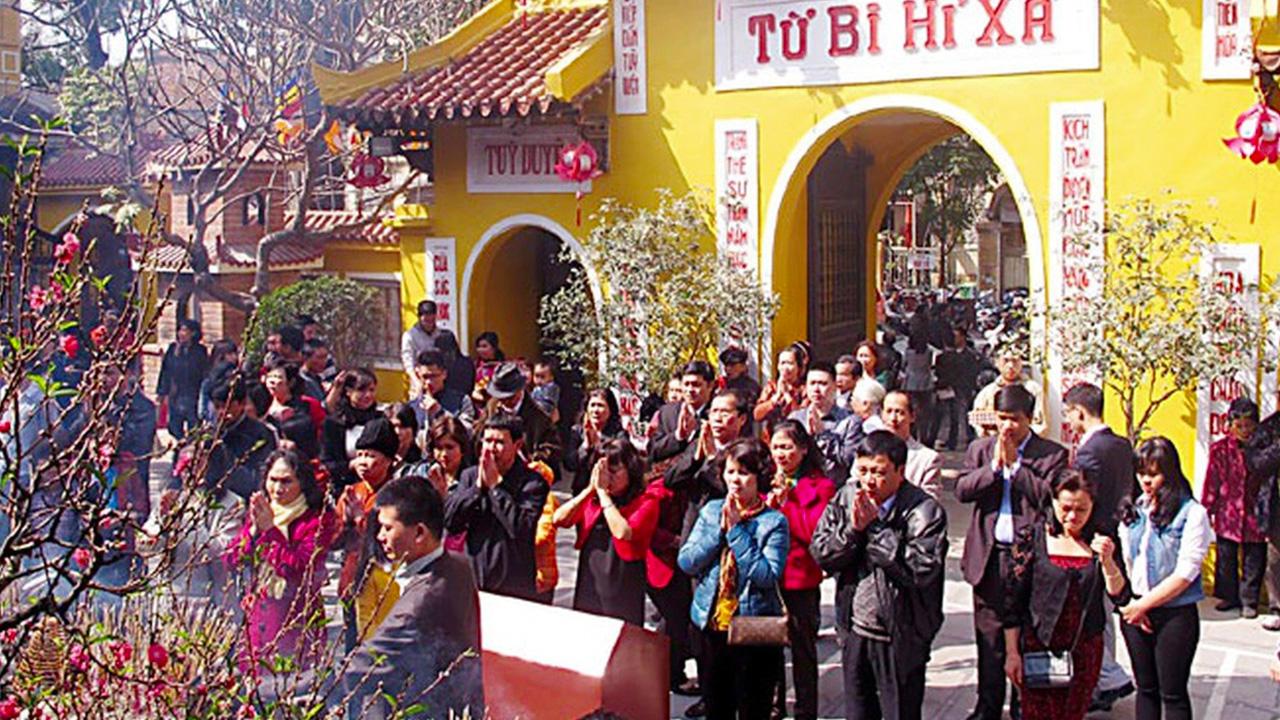
Tips for a Peaceful Visit
To fully enjoy the tranquil environment of Quan Su Pagoda, consider these tips to ensure a meaningful and respectful visit.
Visitor Tips:
- Timing: Consider visiting early in the morning or late in the afternoon to experience the pagoda during quieter times when the spiritual ambiance is more pronounced.
- Preparation: Familiarizing yourself with the layout of the pagoda can enhance your visit, allowing you to focus on areas of personal interest, whether it’s the main hall, garden, or meditation spaces.
- Respectful Observation: Engage with the environment by observing and respecting the ongoing activities and rituals, fostering a deeper connection to the spiritual atmosphere.
These actionable tips ensure that visitors can partake in the spiritual tranquility offered by Quan Su Pagoda, maximizing the benefits of their experience in this cultural haven.
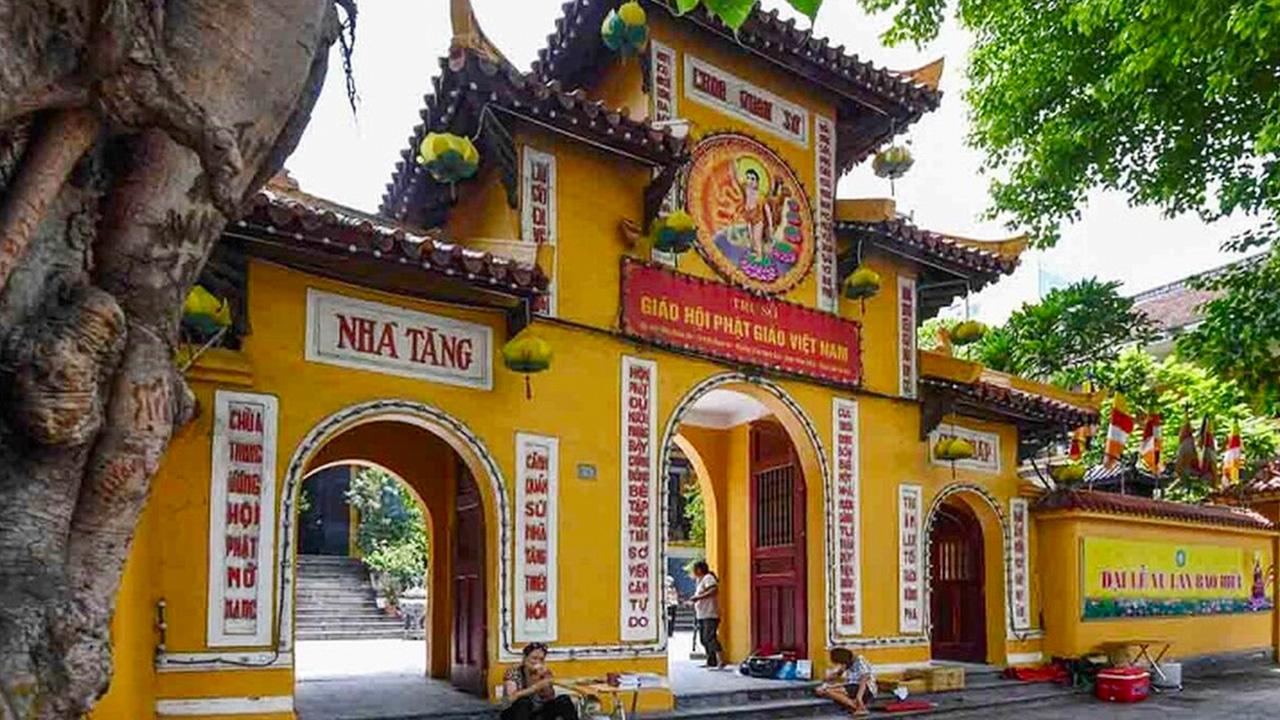
Insights into Meditation Sessions and Rituals
Participating in the meditation sessions and witnessing the rituals available at Quan Su Pagoda can be a transformative experience for those seeking spiritual growth or cultural insights.
Meditation and Rituals:
- Guided Meditation: Visitors often have the chance to participate in meditation sessions led by monks, focusing on mindfulness and introspection techniques.
- Ritual Observance: Engaging in or observing rituals like chanting or offering incense to altars provides a unique insight into Buddhist spiritual practices, enhancing understanding of its philosophical roots.
By immersing yourself in these meditative practices, you gain both a peaceful respite from daily life and a window into the rich spiritual tapestry of Vietnamese Buddhism.
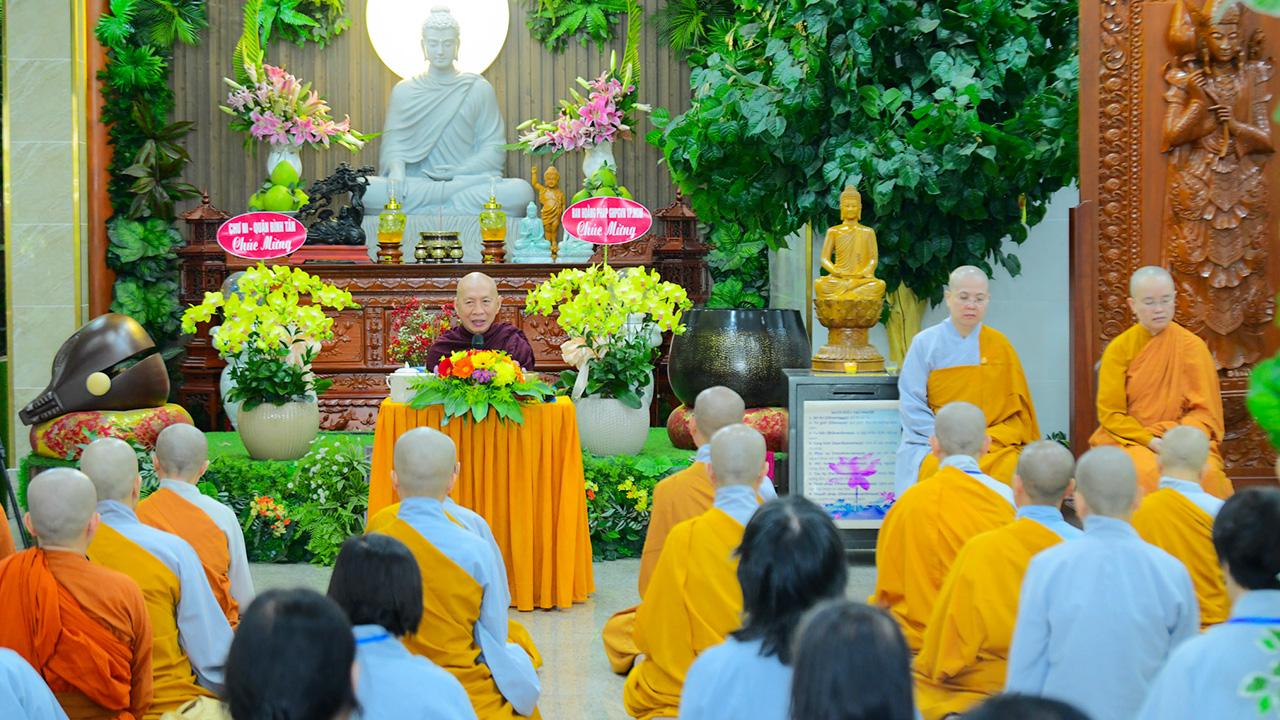
Participation in Local Buddhist Ceremonies
Quan Su Pagoda offers visitors the rare opportunity to actively participate in local Buddhist ceremonies, which enriches the understanding of Vietnam’s religious and cultural ethos.
Participatory Opportunities:
- Ceremonial Involvement: Local ceremonies often invite public participation, ranging from communal prayer to festival events, providing a shared experience of unity and faith.
- Interactive Learning: Many ceremonies feature educational talks or demonstrations, offering deeper insights into Buddhist teachings and traditions.
- Cultural Immersion: Engaging in these gatherings fosters a sense of belonging and cultural appreciation, blending personal experience with communal celebration.
Such participation not only augments the visitor’s appreciation of local culture but also imbues the experience with personal significance, fostering lasting memories and connections.
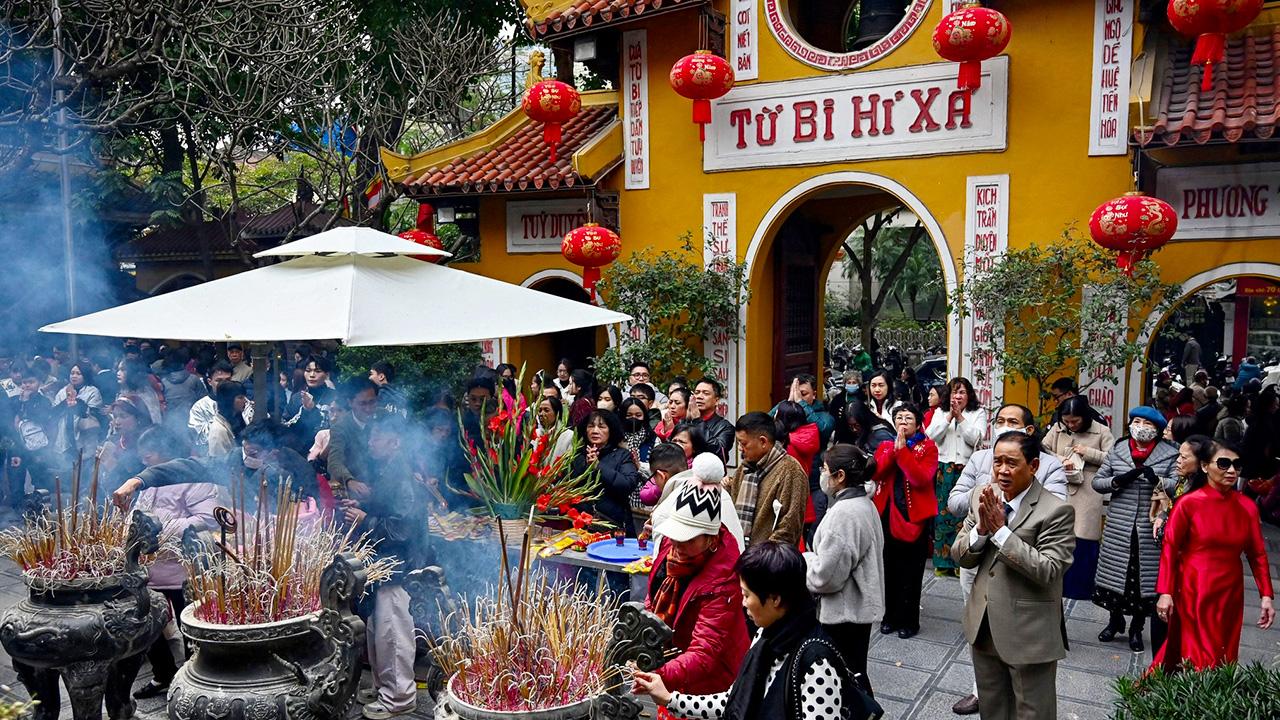
Frequently Asked Questions (FAQs)
- What are the opening hours of Quan Su Pagoda?
Quan Su Pagoda is open daily from 6:00 AM to 7:00 PM. - Is there an entry fee to visit Quan Su Pagoda?
No, entry is free for all visitors. - What should I wear when visiting the pagoda?
Visitors should wear modest clothing, avoiding revealing attire. - Can I take photographs inside the pagoda?
Photography is allowed in most areas but be respectful of worshippers and follow posted signs. - Are there guided tours available at the pagoda?
While official guided tours may not be provided, many visitors appreciate the self-guided experience enhanced by information from local guides available in the city.
Key Takeaways
- Quan Su Pagoda serves as the headquarters of the Vietnam Buddhist Sangha, emphasizing its cultural and religious significance.
- Historical renovations have preserved its architectural integrity, enhancing its role as a spiritual and cultural hub.
- Participation in ceremonies and meditation sessions offers profound insights into Buddhist practices.
- The pagoda is easily accessible and open to all, promoting inclusivity and cultural interaction.
- Close proximity to other attractions makes it a perfect addition to any cultural itinerary in Hanoi.
Conclusion
Quan Su Pagoda stands as a beacon of spiritual and cultural richness amidst the dynamic landscape of Hanoi. Its historical significance and architectural mastery not only reflect Vietnam’s enduring ties with Buddhism but also underscore the nation’s commitment to cultural preservation and spiritual enlightenment. As both a guardian of religious tradition and a hub for community activities, the pagoda exemplifies how ancient practices can thrive in modern contexts. Whether you find yourself drawn by its historical allure or spiritual tranquility, visiting Quan Su Pagoda offers the opportunity to explore a critical facet of Hanoi’s cultural identity, leaving a lasting impression on all who walk its grounds.


